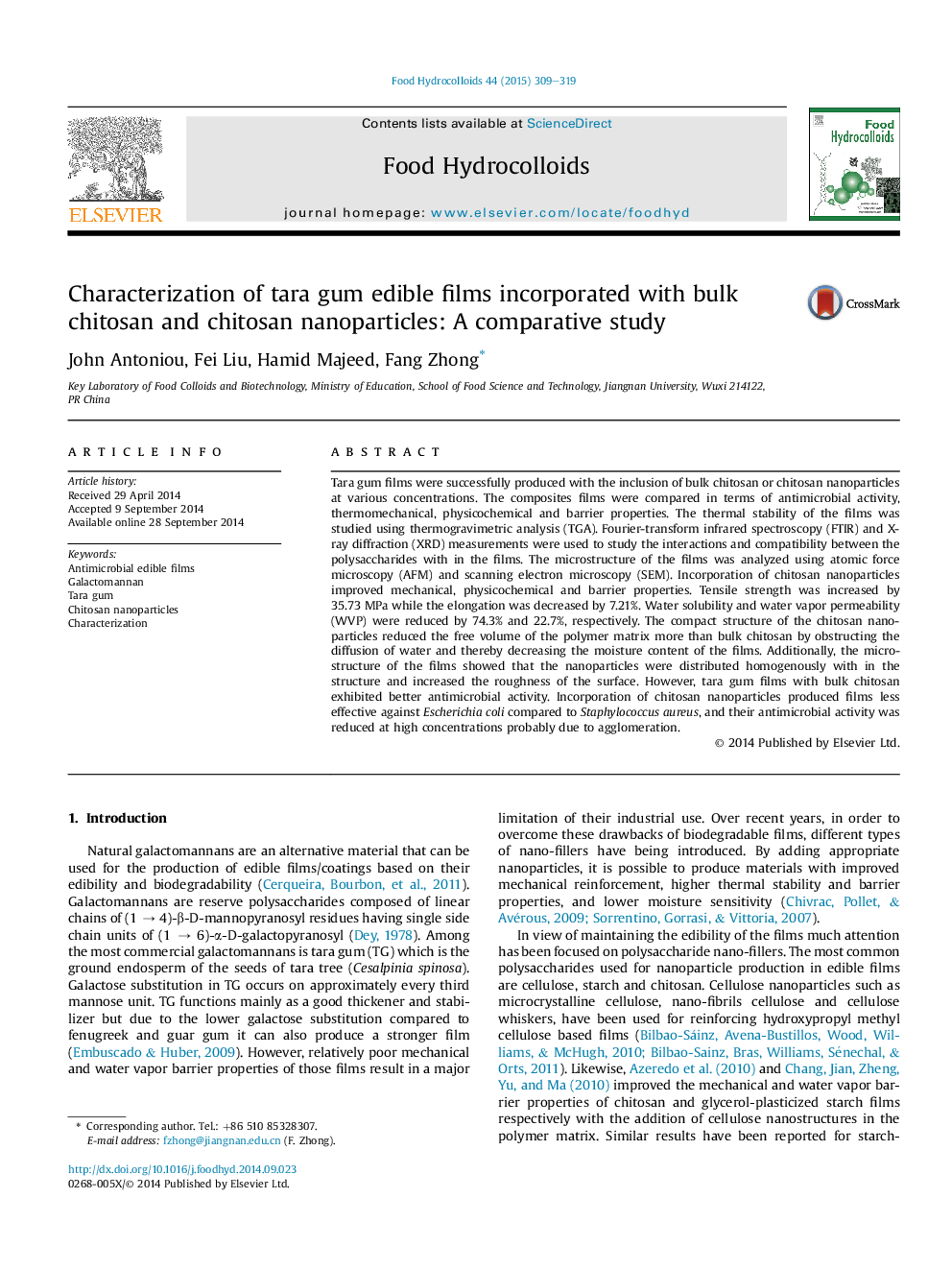| Article ID | Journal | Published Year | Pages | File Type |
|---|---|---|---|---|
| 603828 | Food Hydrocolloids | 2015 | 11 Pages |
•Free standing edible films were produced from tara gum by casting method.•The influence of chitosan as bulk solution and as nanoparticles was investigated.•Chitosan nanoparticles improved mechanical and physicochemical properties.•Chitosan nanoparticles reduced the film's hydrophilicity and water solubility.•Incorporation of bulk chitosan provided the best antimicrobial activity.
Tara gum films were successfully produced with the inclusion of bulk chitosan or chitosan nanoparticles at various concentrations. The composites films were compared in terms of antimicrobial activity, thermomechanical, physicochemical and barrier properties. The thermal stability of the films was studied using thermogravimetric analysis (TGA). Fourier-transform infrared spectroscopy (FTIR) and X-ray diffraction (XRD) measurements were used to study the interactions and compatibility between the polysaccharides with in the films. The microstructure of the films was analyzed using atomic force microscopy (AFM) and scanning electron microscopy (SEM). Incorporation of chitosan nanoparticles improved mechanical, physicochemical and barrier properties. Tensile strength was increased by 35.73 MPa while the elongation was decreased by 7.21%. Water solubility and water vapor permeability (WVP) were reduced by 74.3% and 22.7%, respectively. The compact structure of the chitosan nanoparticles reduced the free volume of the polymer matrix more than bulk chitosan by obstructing the diffusion of water and thereby decreasing the moisture content of the films. Additionally, the microstructure of the films showed that the nanoparticles were distributed homogenously with in the structure and increased the roughness of the surface. However, tara gum films with bulk chitosan exhibited better antimicrobial activity. Incorporation of chitosan nanoparticles produced films less effective against Escherichia coli compared to Staphylococcus aureus, and their antimicrobial activity was reduced at high concentrations probably due to agglomeration.
Graphical abstractFigure optionsDownload full-size imageDownload as PowerPoint slide
